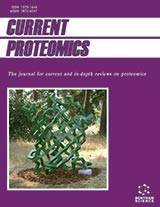Abstract
Background: The Cardiac Purkinje System (CPS), mainly locating on the endo-cardial surface, is very important to physio-pathology of the ventricle, diseases on which are the most in the whole heart. The location and the width of branches are essential to the paths of the electrical signal activation on CPS. However, current ventricle models are presented inclined to ignore its real geometry or use some simple geometry to approximate its real geometry.
Objective: In view of such problems, a methodology in this paper is presented for semi-automatic construction of a computational geometry model of cardiac purkinje system, based on canine anatomic data.
Method: The methodology includes linear extraction by fast marching method, mapping and inverse mapping from 3D surface model of the endocardial layer to 2D image. And the methodology is implemented in a semi-automated way, with the virtue of faster and more accurate.
Results: Compared to existing construction methods, the result obtained by anatomical data is real and effective, more accurate and less time occupation.
Conclusion: This paper presents a construction model of CPS, using anatomic specimen data, so it is very close to the reality of the CPS.
Keywords: Construction, cardiac, purkinje system, anatomic data, computational model, geometry.
Graphical Abstract
Current Proteomics
Title:Construction Model of Cardiac Purkinje System
Volume: 15 Issue: 5
Author(s): Li Jie, Lu Weigang*, Jing Jun and Wang Huaibao
Affiliation:
- Department of Educational Technology, Ocean University of China, Qingdao,China
Keywords: Construction, cardiac, purkinje system, anatomic data, computational model, geometry.
Abstract: Background: The Cardiac Purkinje System (CPS), mainly locating on the endo-cardial surface, is very important to physio-pathology of the ventricle, diseases on which are the most in the whole heart. The location and the width of branches are essential to the paths of the electrical signal activation on CPS. However, current ventricle models are presented inclined to ignore its real geometry or use some simple geometry to approximate its real geometry.
Objective: In view of such problems, a methodology in this paper is presented for semi-automatic construction of a computational geometry model of cardiac purkinje system, based on canine anatomic data.
Method: The methodology includes linear extraction by fast marching method, mapping and inverse mapping from 3D surface model of the endocardial layer to 2D image. And the methodology is implemented in a semi-automated way, with the virtue of faster and more accurate.
Results: Compared to existing construction methods, the result obtained by anatomical data is real and effective, more accurate and less time occupation.
Conclusion: This paper presents a construction model of CPS, using anatomic specimen data, so it is very close to the reality of the CPS.
Export Options
About this article
Cite this article as:
Jie Li, Weigang Lu *, Jun Jing and Huaibao Wang , Construction Model of Cardiac Purkinje System, Current Proteomics 2018; 15 (5) . https://dx.doi.org/10.2174/1570164615666180709120718
| DOI https://dx.doi.org/10.2174/1570164615666180709120718 |
Print ISSN 1570-1646 |
| Publisher Name Bentham Science Publisher |
Online ISSN 1875-6247 |
 17
17 3
3
- Author Guidelines
- Bentham Author Support Services (BASS)
- Graphical Abstracts
- Fabricating and Stating False Information
- Research Misconduct
- Post Publication Discussions and Corrections
- Publishing Ethics and Rectitude
- Increase Visibility of Your Article
- Archiving Policies
- Peer Review Workflow
- Order Your Article Before Print
- Promote Your Article
- Manuscript Transfer Facility
- Editorial Policies
- Allegations from Whistleblowers























